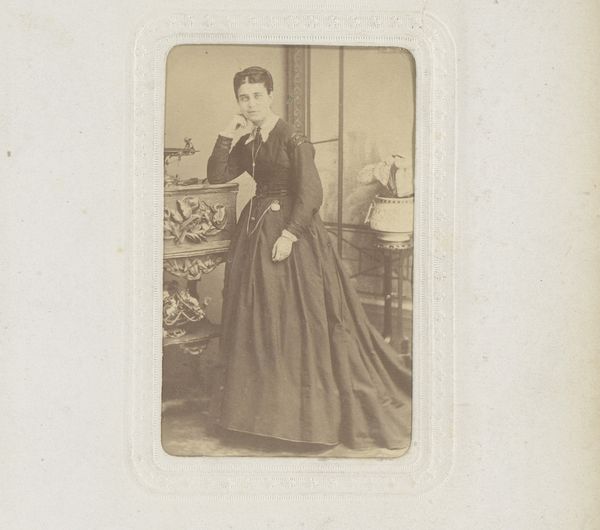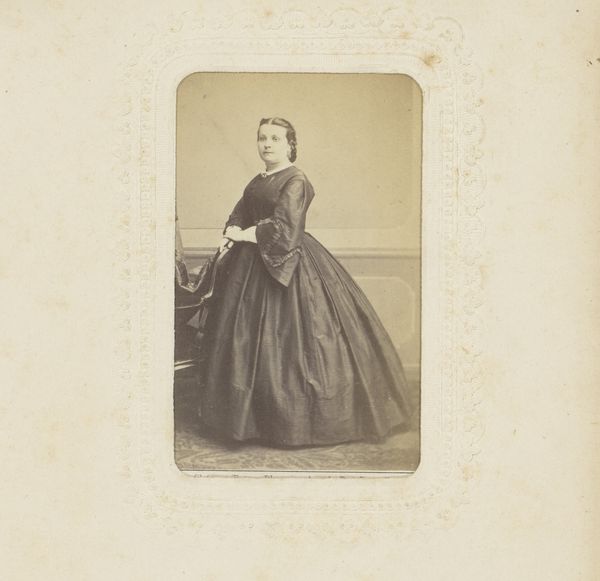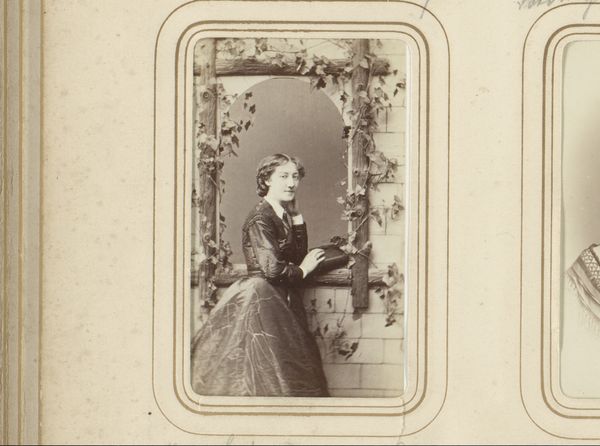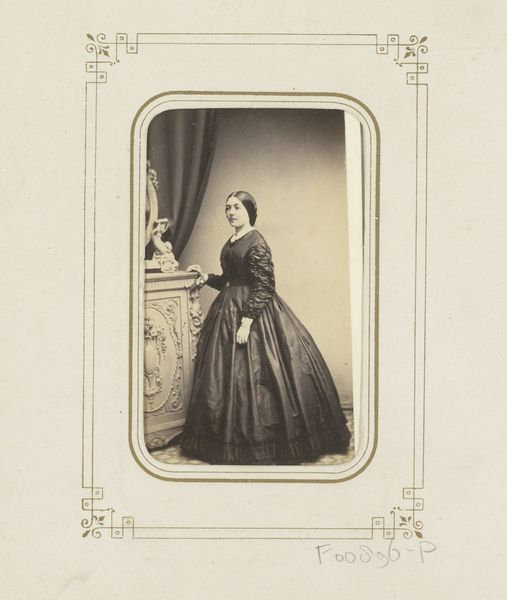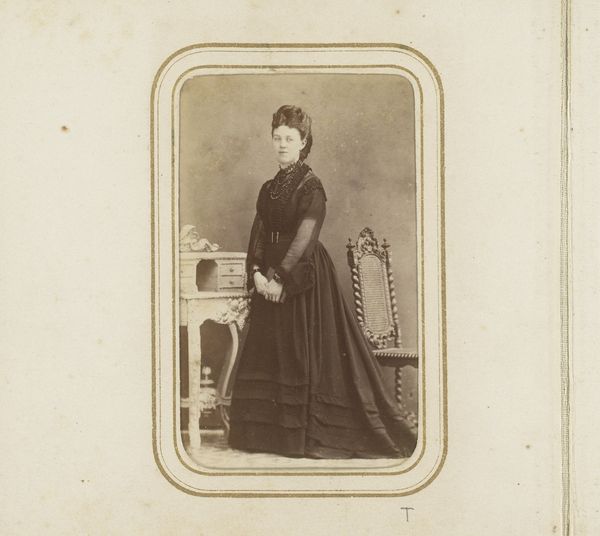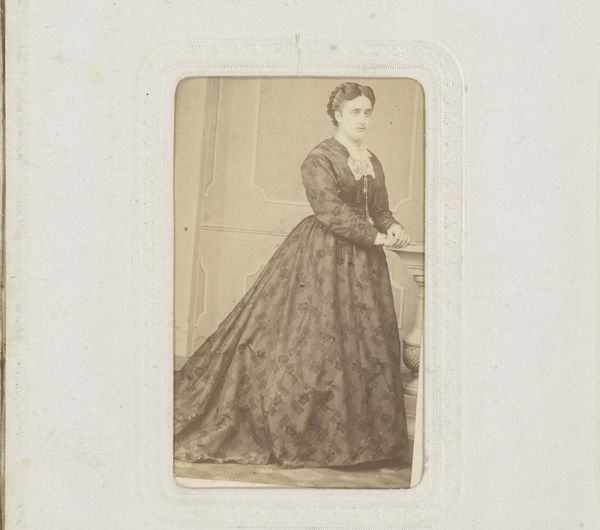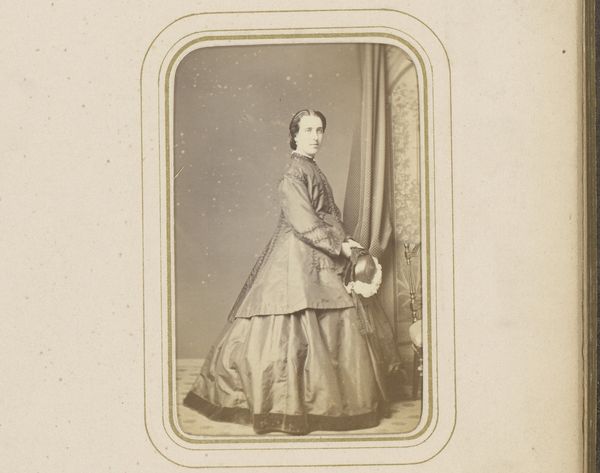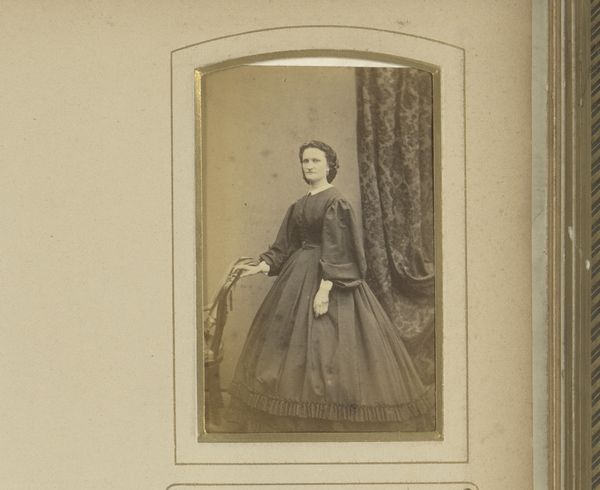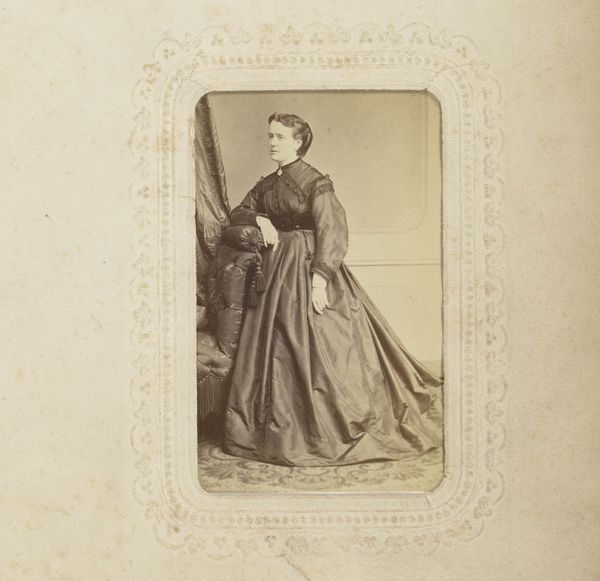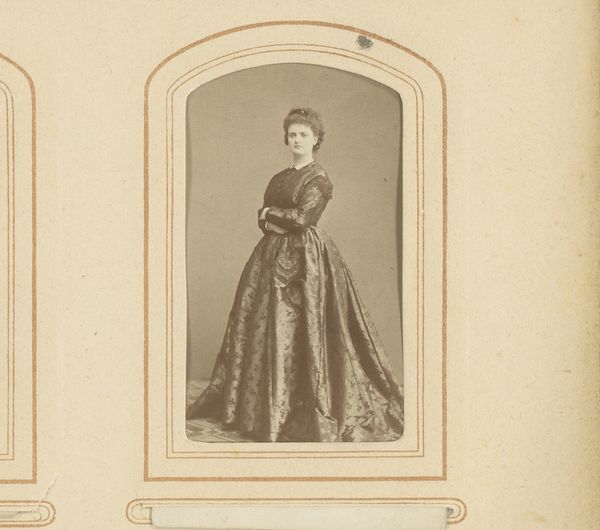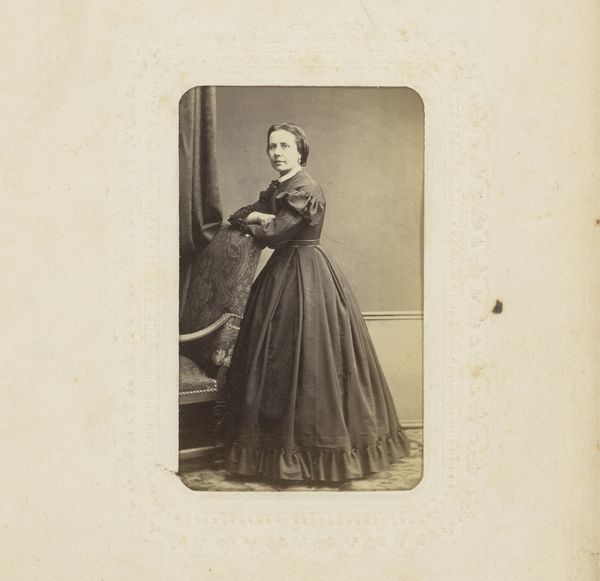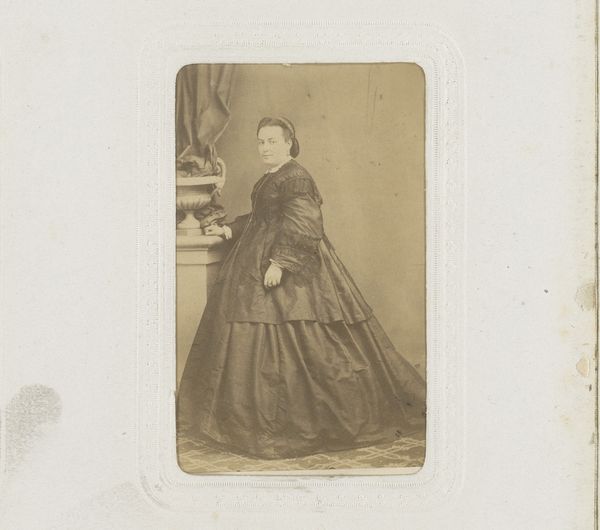
photography, gelatin-silver-print
#
photography
#
historical photography
#
gelatin-silver-print
#
19th century
#
genre-painting
Dimensions: height 81 mm, width 52 mm
Copyright: Rijks Museum: Open Domain
Curator: This gelatin silver print, titled "Portret van een vrouw, staand bij een stoel," captures a woman standing beside a chair. It likely dates from somewhere between 1850 and 1900, according to our records. The photographer is listed as W. Kessler. Editor: My immediate reaction is that this is a portrait of constrained femininity. The tightly laced dress, the demure posture—everything seems meticulously controlled. Even the setting looks purposefully arranged, doesn’t it? Curator: Absolutely. The chair, for example, acts less as a resting place and more as a prop, enhancing the visual narrative. And her clothing – a dark gown relieved with accents of white trim – certainly reinforces that sense of societal decorum of the era. Think of what it represented in its time. Editor: True. It probably spoke to status, respectability...but also perhaps limitation. Those elaborate dresses weren't exactly practical! How do you see her gesture of lightly holding the chair affecting the composition, though? Does that signify something symbolic for you? Curator: The hand gently resting could signal either a temporary support or perhaps a subtle grasping for stability in her world. Visually, the chair acts as a mirroring echo; its curves reflect those of the woman’s voluminous skirt and softened shoulders. This image reminds me how, within constructed frameworks of the Victorian era, the use of props became another language entirely. Editor: Precisely. This is a woman presented in a very deliberate light for public consumption. The portrait plays a part in shaping her public identity. One wonders how much control she truly had over it, especially during the rapid development of photography and the increased availability of photo portraiture in the late 19th century. Curator: Yes, these images were increasingly circulated in the public sphere. It’s fascinating how they allowed for the dissemination of aspirational ideas of beauty, morality, and social roles. These are not simple representations but constructions meant to signal something to others, and remind the portrayed themselves of a new reality. Editor: And for today’s audience, seeing these images provides not just a glimpse into fashion and material culture, but an encounter with visual arguments that speak to broader political and historical forces at work, forces that are continuously under renegotiation today. Curator: Looking at "Portret van een vrouw, staand bij een stoel," then, allows us to peel back those layers to better see the ways historical expectation interacts with individual expressions of personhood across time.
Comments
No comments
Be the first to comment and join the conversation on the ultimate creative platform.
